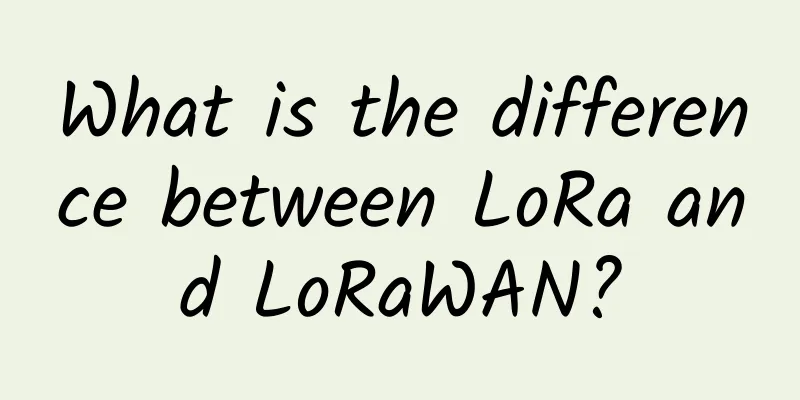What is the difference between LoRa and LoRaWAN?

|
LoRa, or Long Range, is a proprietary low-power, long-range wireless technology that uses unlicensed wireless spectrum – just like Wi-Fi uses the unlicensed 2.4 GHz and 5 GHz bands. The exact frequency band used by LoRa depends on the physical location of the deployment. For example, LoRa uses the 915 MHz band in North America and the 868 MHz band in Europe. Therefore, it is important to know which frequencies are legally available for use in each LoRa deployment location. From a range perspective, LoRa can communicate up to 10 km in optimal line-of-sight conditions. LoRa technology is owned by semiconductor supplier Semtech. While LoRa has been around for a while, LoRa chipsets have only improved in recent years to reduce power usage. These advances make LoRa ideal for IoT devices, which are widely distributed and battery-powered but only send small amounts of data at speeds of up to 27 Kbps. Examples of common LoRa deployments include asset tracking, smart meters, inspection equipment, smart parking, and agricultural field monitoring. From a networking perspective, LoRa creates a physical layer method for wireless transmission, such as a transceiver chip. This means it lacks a proper network protocol to manage traffic for data collection and endpoint device management. This is where Long Range WAN, or LoRaWAN, comes in. LoRaWAN is an open, cloud-based protocol - designed and maintained by the LoRa Alliance - that enables devices to communicate wirelessly with LoRa. Essentially, LoRaWAN takes the LoRa wireless technology and adds a networking component to it, while also integrating node authentication and data encryption for security. From an enterprise IT deployment perspective, LoRaWAN networks are ideal for IoT devices that continuously monitor the status of something and then trigger an alert back to the gateway when the monitored data exceeds a specified threshold. These types of IoT devices require little bandwidth and can run on battery power for months or even years. Difference between LoRa and LoRaWAN Both LoRa and LoRaWAN are primarily used for IoT devices, but each has its niche features and applications. LoRa technology provides a way to use unlicensed wireless spectrum, but it lacks the network capabilities needed for management. LoRaWAN is a protocol built on top of LoRa and creates a network layer. |
<<: China Mobile Xiongyan Consulting Insights: 5G URLLC Key Technology Research Report
>>: Why does the TCP protocol have a sticky packet problem?
Recommend
Why the development of optical communications is not as good as 5G, experts say: each is fighting for its own
At the 2021 China Optical Network Conference whic...
With the advent of the cloud era, what new challenges does IT operations and maintenance face?
In the era of cloud computing, IT system construc...
Traffic scheduling: DNS, full-site acceleration and computer room load balancing
We have learned about how to deal with traffic pr...
VXLAN and MPLS: From Data Center to Metro Ethernet
In recent years, the evolution of cloud computing...
Academician Wu Hequan: 5.5G does not require full network coverage, and recommends joint construction and sharing
IT Home reported on December 7 that the 2023 Worl...
5G issues should not be politicized
The official website of the European Competitive ...
CloudCone Easter Sale: $14.28/year - 1GB/45GB/4TB/Los Angeles Data Center
CloudCone's Easter sale started today, offeri...
How fiber optic networks can create more efficient and secure connections
We live in a technologically advanced age where h...
The Dilemma and Hope of SRv6
Operators have been fighting "pipelining&quo...
Illustrated Network: The principle behind the TCP three-way handshake, why not two-way handshake?
TCP is one of the main protocols of the Internet ...
[11.11] Spinservers cloud server 50% off $19/month, dual core, 8G memory, 200G SSD, 10TB monthly traffic
spinservers has launched a promotion for Double 1...
2017 Global Internet Economy Conference opens in Beijing; the era of Internet of Everything has arrived
On the morning of September 5, the GIEC2017 Globa...
Availability monitoring tool for large networks
[[184858]] No enterprise can live without network...
F5 is committed to being a "general practitioner" protecting hospital applications by taking a two-pronged approach of safety and reliability
At a time when all walks of life are experiencing...
Among China Mobile, China Unicom and China Telecom, which 100M broadband is more reliable and cost-effective?
Currently, 100M fiber-optic access to homes has b...









